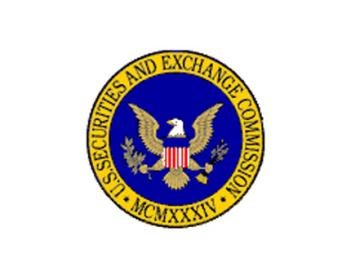The out-of-pocket costs of compliance with the SEC conflict minerals rule have been lower than those originally estimated by industry and by the SEC. But, it’s not because the original estimates were over-stated or inflated. And, these lower than expected out-of-pocket costs don’t mean that business’ concerns about compliance were misplaced. These lower costs have resulted mostly (but not completely) from tools and approaches developed by industry.
So, borrowing from late night TV, here are (in reverse order) 11 reasons why the out-of-pocket costs of compliance with the SEC conflict minerals rule have been lower than originally estimated:
11. Scoring and benchmarking by only one group. The most significant and visible scoring and benchmarking of conflict minerals disclosure has been done by one group — initially the group was at Tulane University and now that group is known as Development International. Because the scoring and benchmarking is being published by one group, companies have been saved from navigating among various and inconsistent scoring methodologies and results.
10. Minimal pressure by SEC. There has been minimal SEC follow-up with or comment to individual filers on their Form SDs and conflict minerals reports. There has been very little guidance from the SEC that has required additional investment in compliance programs or increases to disclosure. There has been no enforcement action against companies for failure to comply with SEC conflict minerals reporting obligations.
9. OECD Guidance as a framework. The OECD Due Diligence Guidance is a framework for due diligence efforts and not a litany of absolute requirements. Precious few downstream companies have implemented all of the elements for each of the 5 steps exactly as stated in the Guidance. For example, the OECD Guidance suggests that downstream companies should visit the smelters and refiners in their supply chains and require them to source responsibly. Smelters and refiners cannot possibly accommodate visits by all companies that receive, directly and indirectly, conflict minerals that they process. And companies cannot afford to incur the costs of auditing all the possible smelters and refiners in all their supply chains — and duplicate the efforts of others doing the same thing. And, most companies have not done so – at least not directly.
8. Uncertainty about future of rule. Many groups have been working to repeal the rule – through legal challenges and legislative action. For the first few years of the rule, industry engaged in a legal challenge to the rule and its requirements. In the early days of the Trump Administration, it appeared that President Trump might take action to waive compliance with the rule by relying on certain provisions of Section 1502 of the Dodd-Frank Act. The proposed Financial CHOICE Act (which was passed by the US House of Representatives in May) would repeal Section 1502 in its entirety. The growing uncertainty during 2016 and 2017 about the rule’s future led most companies to “stay the course” during the last reporting period and not make significant programmatic changes in their compliance approach.
7. Compounds not in scope. After a lot of effort by several industry associations, the SEC provided informal guidance that chemically-distinct compounds are not in the scope of the rule. This approach significantly reduced the number of products and the number of companies that are covered by the rule. For countless products in many industries, the only connection to conflict minerals was their use of compounds. So, the SEC guidance on this point reduced the overall cost of compliance.
6. IPSAs not required. In April 2014, the SEC provided guidance that allowed companies, under certain circumstances, to avoid having to obtain independent private sector audits (IPSAs) on their due diligence efforts. The SEC provided this reprieve after the April 2014 Court of Appeals’ ruling that certain elements of the conflict minerals rule violated companies’ First Amendment rights. The legal challenge that led to that decision was brought by the National Association of Manufacturers, the Business Roundtable and the Chamber of Commerce. The requirement for the IPSA is included in Section 1502 of the Dodd-Frank Act, so the SEC will have to address that requirement as it reconsiders the rule in light of the Court of Appeals’ ruling. But, not having to obtain IPSAs for the last 3 reporting years has resulted in significant cost savings for most companies.
5. Limited number of smelters/refiners. There are roughly 400 smelters and refiners of conflict minerals world-wide. Because of that limited number of processors, industry is able to focus directly on requiring them to comply with recognized due diligence standards for conflict minerals sourced from the Democratic Republic of Congo and adjoining countries. So, most companies have not undertaken extraordinary efforts to determine the particular smelters and refiners the processed the conflict minerals in their products. Instead most have opted to identify all the possible smelters and refiners in all their supply chains. Then, they seek to confirm that all those identified are compliant with recognized due diligence standards. As a practical matter, focusing on those smelters and refiners can be more efficient than trying to obtain product-level information from all direct and indirect suppliers in a company’s supply chains.
4. Success of CFSI audit program. The Conflict Free Sourcing Initiative is one of most important resources for companies’ compliance efforts. It provides independent, third-party audits of smelters’ and refiners’ sourcing practices and provides validated lists of smelters and refiners that have been found to have complied with Conflict-Free Smelter Program protocols. Companies across all industries and in all regions rely on CFSI’s audit program.
3. Early standardization of disclosure forms. The rule does not provide specific reporting format requirements. But by their early collaborative efforts, industry associations, working groups, inhouse counsel online resources, and law firms developed standardized outlines and examples of Form SD disclosure and conflict minerals report disclosure. The pre-effective date sharing of those outlines and examples, and their wide-spread dissemination, led to more uniformity in disclosures and lower drafting costs.
2. Inhouse resources bear the compliance burden. Most of the conflict minerals compliance efforts have been undertaken by in-house personnel. And, very few companies created new positions to accomplish these efforts. So, while the out-of-pocket costs have been lower than expected, the burden of compliance on in-house resources should not be underestimated. Over time, a growing number of companies have turned to software solutions for large portions of their supplier engagement efforts and their smelter and refiner analysis. Fierce competition and price pressure on those software solutions have reduced the out-of-pocket costs of these tools. Finally, in-house personnel are able to take advantage of vast amounts of high-quality, free online resources.
1. Conflict Free Sourcing Initiative’s Conflict Minerals Reporting Template (CMRT). The electronics industry (namely, members of the Electronic Industry Citizenship Coalition and the Global e-Sustainability Initiative) founded the Conflict-Free Sourcing Initiative, which went on to create an open source template for gathering information about source and chain of custody of conflict minerals. That template was the tool of choice for most industries in the first year of the rule. By year two, the CMRT was almost uniformly used across all industries, all geographies, by companies large and small. Again, this industry-lead effort was a huge success and contributed to significant overall out-of-pocket cost savings.
Are there factors and circumstances that have increased costs and burden of compliance notwithstanding that companies have just entered year 5 of compliance?
And, there are changes that could reverse the trend, add requirements and increase out-of-pocket costs going forward?




 i
i


